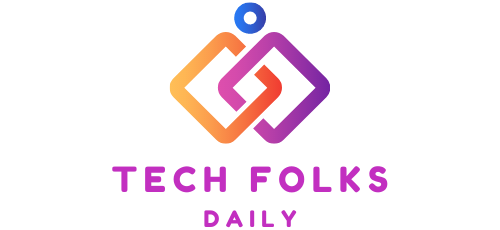Addressing The Lack Of AI Knowledge Among Machine Builders
The use of artificial intelligence (AI) in machine learning (ML) applications requires more knowledge. Look at four ways to improve artificial intelligence and machine learning education.
Finding a worker for artificial intelligence (AI) is difficult. Few industrial companies have enough. Artificial intelligence will change the way many jobs look. Companies should provide each employee with the knowledge they need to adapt to new roles enriched with the use of artificial intelligence. Using AI helps implement new business models and provide better services. Users must be able to work with it.
Over the last decade, AI design, development, and implementation have expanded into many industries. Organizations struggle to understand the business potential of AI and find staff for AI.
More and more countries recognize the opportunities offered by artificial intelligence and have developed national artificial intelligence strategies. In 2017, Finland was among the first countries to launch an artificial intelligence program. The programming aimed to make Finland a leader in the application of artificial intelligence.
The Finnish artificial intelligence program has identified a small group of companies as pioneers in the implementation of AI. Most companies are in the early stages of using data and AI.
How to address the lack of knowledge in the field of artificial intelligence
One way to address the knowledge gap in artificial intelligence is to increase funding for digital technology, mathematics, and technical education in general. In addition, the current education system in Finland does not yet pay sufficient attention to the application of AI in various areas. Academic and training programs are unable to keep pace with the rapid pace of innovation in artificial intelligence. Academia, companies, and public sector officials need to work together to ensure that comprehensive AI curricula are available. Artificial intelligence teaching should start early and should take place at every stage of education. Massive Open Online Courses (MOOCs) point the way and are a good example of a modern way to teach the general public basic knowledge about AI.
The manufacturing sector is currently lagging in using artificial intelligence and ML compared to many other industries. Companies have long experience in optimizing production, and since the investment can last for decades, changes cannot be made quickly. Introducing new technologies, especially in the process industry, requires careful planning, which is time-consuming. In addition, safety and environmental regulations require strict management.
Based on its industry estimates of the AI impact index, PwC [formerly known as PricewaterhouseCoopers, a professional services firm] anticipates that operating margins may increase in individual industries by 2023 (how much revenue remains for each euro after deducting the direct cost of selling goods). and operating costs) by 60 to 100%. The difference in the “AI increase” curve across sectors reflects the impact of two factors: 1) the speed at which industries can deploy different AI applications, and 2) the development of AI systems to address the industry’s business problems.
Advantages and barriers of AI in production
In manufacturing, short-term benefits are expected to come mostly from the automation of processes and productivity-based solutions. More complex processes can be automated in the medium term, as intelligent automation offers significant potential, and predictive maintenance and optimization applications further increase performance.
The increase in productivity thanks to AI and ML depends not only on the introduction of the technology itself. It is also necessary to change the organization of work and increase the knowledge of employees.
Research shows that the biggest obstacle to introducing AI and machine learning is the lack of knowledge. Surveys usually point to the technical skills needed to develop AI and ML solutions. However, the greatest lack of knowledge in AI and M1 concerns the organization.
The final report of the Finnish Artificial Intelligence Program pointed out that, according to the survey, Finland has a high-quality education for those who want to be AI professionals (information technology, mathematics). Still, there is a shortage of AI applicators. According to the working group, in order to achieve the ambitious goals of AI, the most important thing is to ensure the availability of universal education, invest in new educational methods, and create programs that attract talented workers to Finland. In these areas, the impacts of AI will be seen most quickly.
Continuing staff training is a challenge, and various operations and mechanisms can address these issues. A critical factor is increasing management awareness and knowledge of AI opportunities to ensure sufficient inputs for new flexible training methods.
AI operational project for machine learning
A concrete example was Ponsse’s after-sales service project, particularly field maintenance, where ML was used to identify the required oil change interval. Hydraulic oil and filters are currently changed at set intervals, approximately every 1,800 hours, and optimizing the change interval would result in significant savings.
The MLA course lasts approximately three calendar months and the planned total working time of the participants, including project work, is 100 working hours. Feedback and experience from the first two MLA courses suggest that this is sufficient to achieve the planned learning objectives, depending on the participants’ ability to study beyond their day-to-day responsibilities. The project assigned in the course also seems to be a good way to concretize the teaching and gain the interest of various stakeholders.
Lack of knowledge about ML in its implementation and insufficient training have implications for the manufacturing and engineering industries. Although knowledge shortages are likely to persist for the foreseeable future, there is a clear need for tailored AI / ML training programs to help companies develop employees and encourage them to start experimenting with AI.
Four ways to improve AI / ML teaching
Recommendations for helping companies, academic institutions, and state administration in teaching in the field of AI and ML:
- Develop a curriculum tailored to your industry. Instead of trying to compete in general with leading technology companies such as Google in AI, we recommend becoming the leading AI company in your industry. Developing unique AI capabilities will allow you to gain a competitive advantage. How AI affects your company’s strategy will depend on the specific industry, company, and situation.
- Focus on training the entire company staff. Rather than setting up separate AI units within the organization, we recommend increasing AI competencies and understanding at all levels – from management to the workshop. The same principle applies at the level of the professional public.
- Artificial intelligence teaching should support specific pilot projects and use cases. Develop artificial intelligence curricula that support specific pilot projects and use cases. It helps turn AI concepts into practical value.
- Reform existing public education. Explore opportunities to create an artificial intelligence training voucher or education account that would stimulate functioning adult learning markets. Increase the number of web-based training and open university courses for the general public. Integrate artificial intelligence education also into vocational school curriculum.
Also Read : Nanotechnology For Everyday Use?



